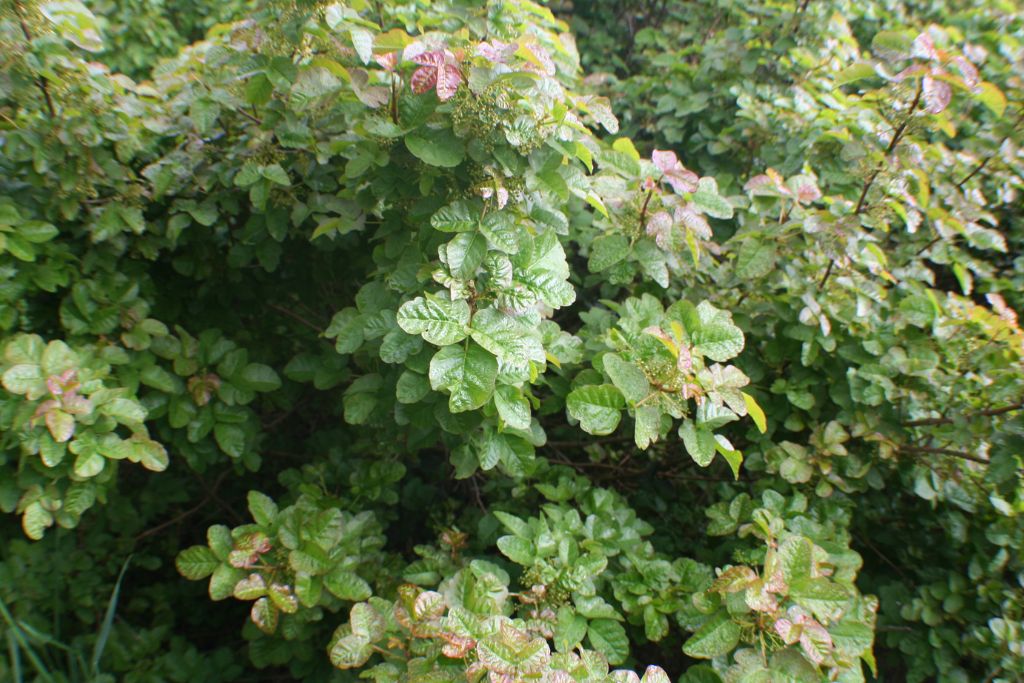ALL YOU NEED TO KNOW ABOUT THE POISON SUMAC PLANT
Growing in the damp and swampy wood areas of the South-East, Poison Sumac is another plant from the Rhus Genus family that is bound to cause skin infections, in case of getting in contact. If you live around the Southeast and Northeast areas, then there is a high possibility that you have this plant growing in your backyard. While in New York, you should get the plant removed promptly by hiring the finest poison sumac removal services in NY because this plant could be hazardous if not removed at the earliest. This plant excretes urushiol, an oil that causes itchiness, soreness, and pain when in contact with human skin.
IDENTIFYING POISON SUMAC PLANT:
To execute the poison sumac removal in NY, you must identify what the poison sumac plant looks like. It can be easily confused for poison oak or poison ivy plant because of their resemblance. Poison sumac is a small tree or a large shrub that can be as high as 20 feet but frequently occurs at 5 or 6 feet. Each stem of poison sumac consists of 5 to 13 smooth leaves around the edge. The stem is red with green leaves in the summer and yellow in the fall. The plant also has green berries on each stem, which turn white in the fall. If you live near the areas of Texas and New York, then you should highly consult poison sumac removal services in NY as these plants are vastly found in these areas.
HOW TOXIC IS THE POISON SUMAC PLANT?
Poison Sumac plant belongs to the Rhus Genus family which comprises the urushiol toxin, which causes soreness, aching, and irritation. This toxin is readily present in the poison sumac, poison oak, and poison ivy plants. According to researchers, the poison sumac plant has shown the highest concentration of urushiol, which makes it more harmful than poison oak and poison ivy. The plant was also termed the most lethal plant in all of the United States.
The reason for the high percentage of urushiol is that the toxin is readily found in every component of the plant. However, it was also observed that the plant possessed toxins even after it expired. The rash from poison oak is excruciating and can result in long-lasting irritation depending upon your exposure to the plant. The plant is ineffective on animals, but the infection can be transferred to humans if they come in contact with the animals.
SYMPTOMS OF POISON SUMAC INFECTION:
Poison Sumac infection is usually observed 8 to 48 hours after contacting the plant. It shows several symptoms, which include:
- Itchiness
- Redness
- Sores and Blisters
- Burns
- Coughing
- Swelling
- Difficulty in Breathing
- Fever
If you are experiencing trouble breathing, high fever, and extreme swelling, you should immediately consult a doctor as the poison sumac has infected 30% of your body, which is extremely dangerous.
PREVENTING POISON SUMAC INFECTION:
You must be familiar with the phrase “Prevention is better than Cure.” This phrase relates perfectly to the poison sumac infection. This infection can be extremely dangerous and irritating. Therefore, one should always try to avoid it in the first place. Following are some measures to prevent the poison sumac infection:
- Gather complete information about the poison sumac plant so that you can identify it
- Wear clothes that cover your whole body so that the resin doesn’t come in contact with your skin
- Wear gloves and long boots in the garden
- Hire professionals to execute poison sumac removal in NY
- Dispose of the plant properly in a bag
- Don’t burn the plant because the urushiol vapors are more lethal than the oil.
If you face any of the symptoms, then there is a high chance that the poison sumac plant has infected you. Poison sumac infection can be easily treated in its earliest stage; however, you should rush to the hospital if you experience breathing problems and extreme swelling. Following are some ways to treat poison sumac reaction in the earliest stage:
- Immediately wash the infected area with soap and water.
- Applying rubbing alcohol to rub off any excess toxin
- Apply calamine lotion, hydrocortisone creams, topical anesthetics, or oral antihistamines to the infected area.
By following the above steps, you can treat the rash in the earliest stage. We highly suggest that you should visit the hospital if the pain increases.
KEY TAKEAWAY:
· Poison Sumac Plant is the most hazardous plant among all the plants.
· The infection is caused by the urushiol toxin excreted from the plant.
· The urushiol toxin comes in contact with the skin to cause itchiness, soreness, and pain; it is also transmitted through animals.
· The plant has red stems with 5 to 13 smooth green leaves, which turn yellow in fall.
· One should cover the whole body to avoid getting infected.
· If infected, clean the infected area and rush to the hospital if the pain exceeds
latest video
news via inbox
Nulla turp dis cursus. Integer liberos euismod pretium faucibua





